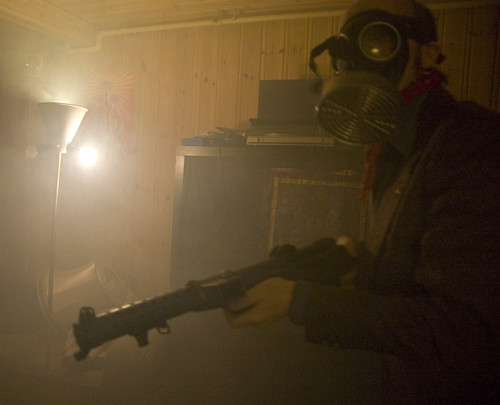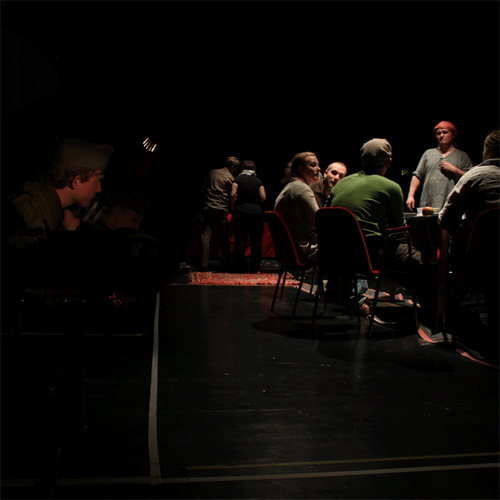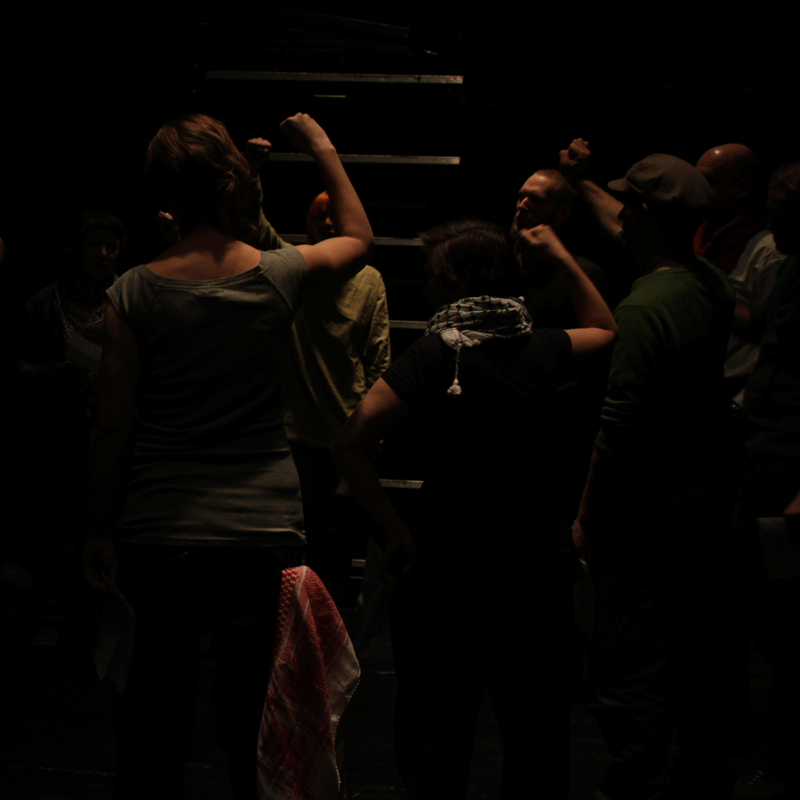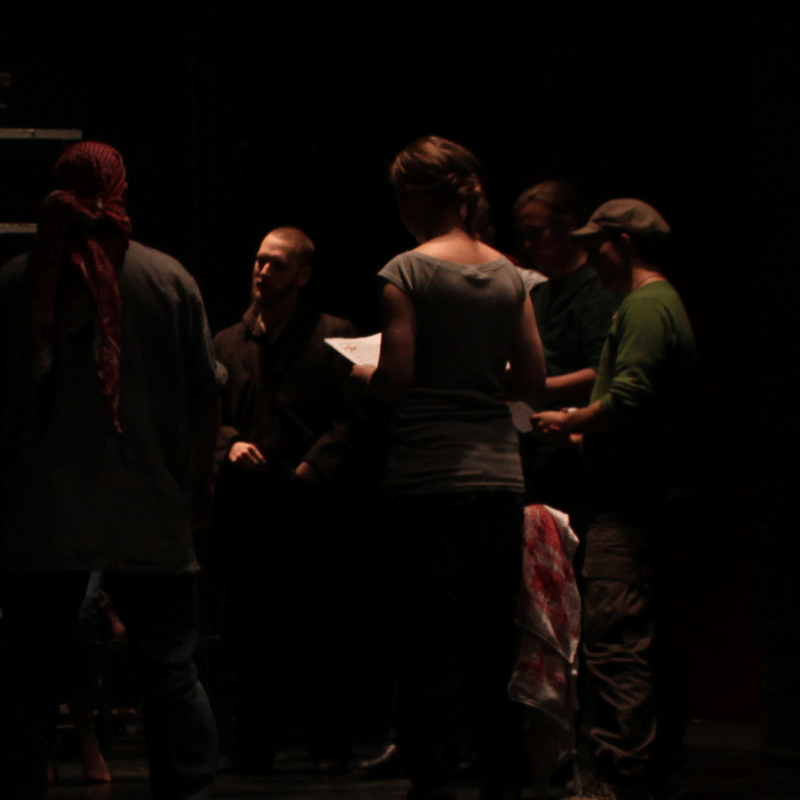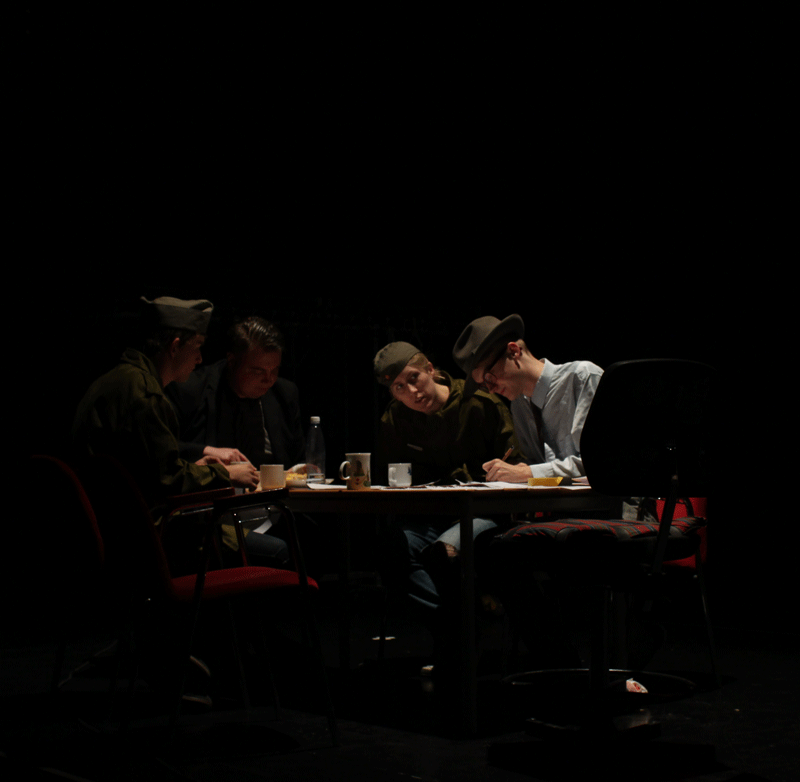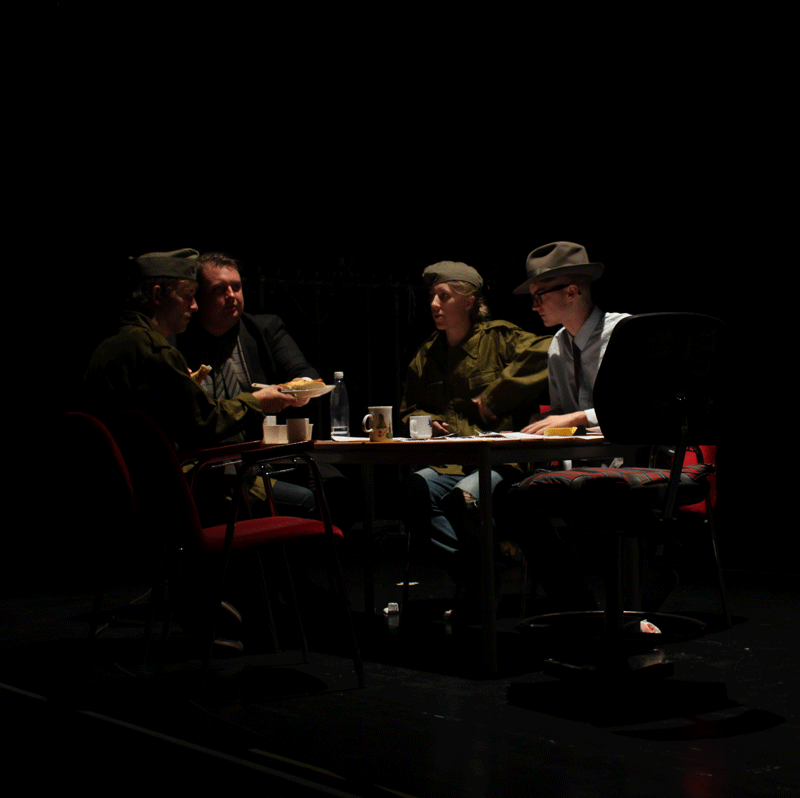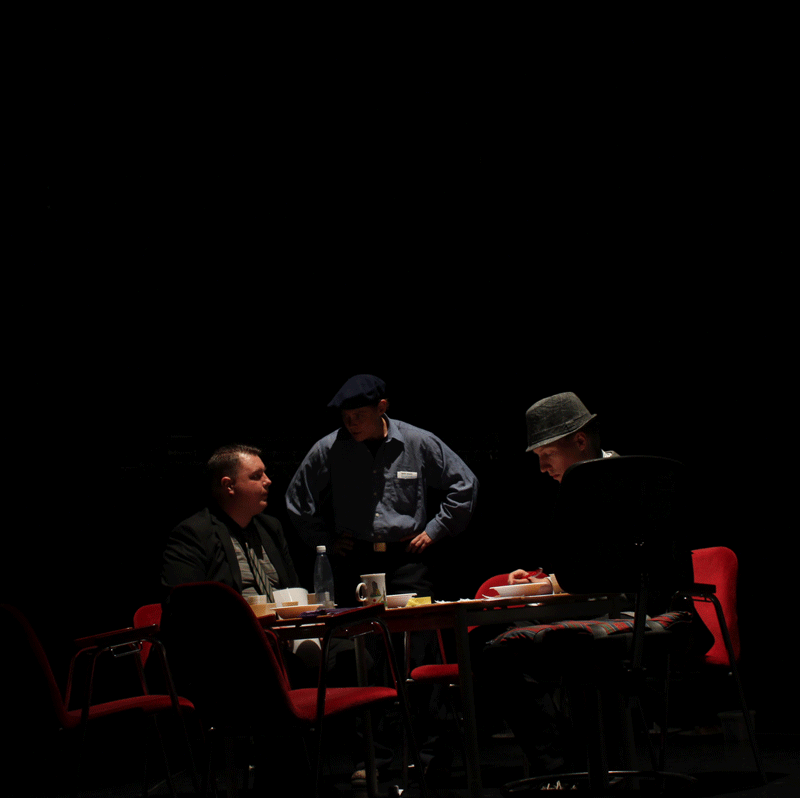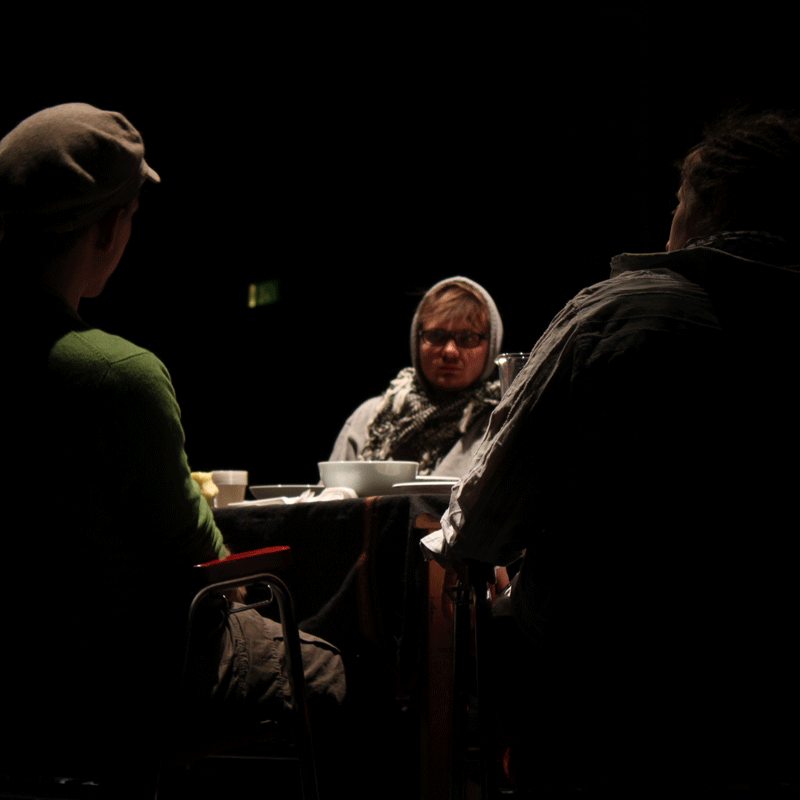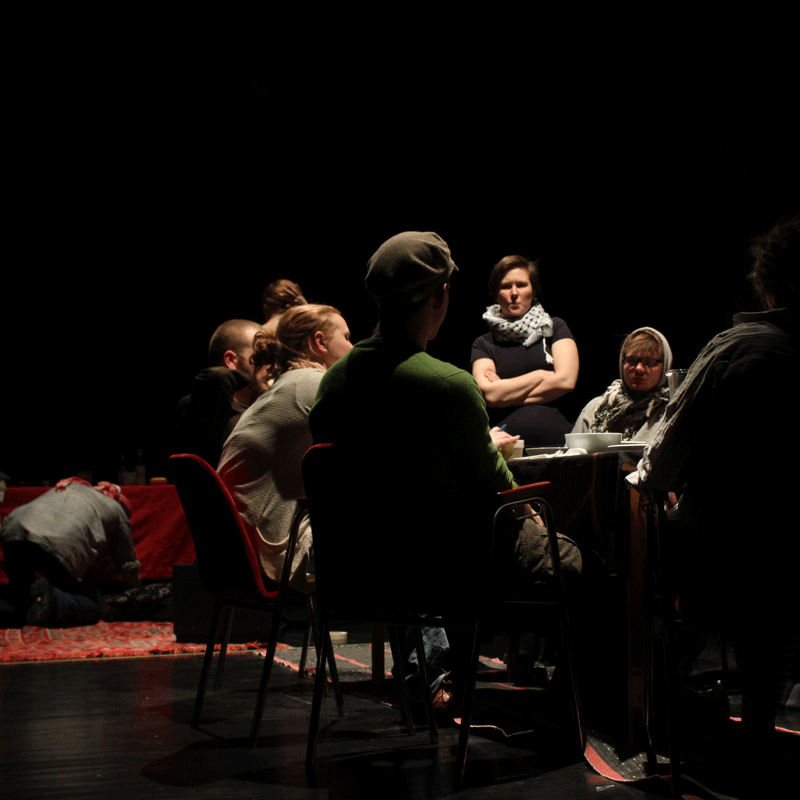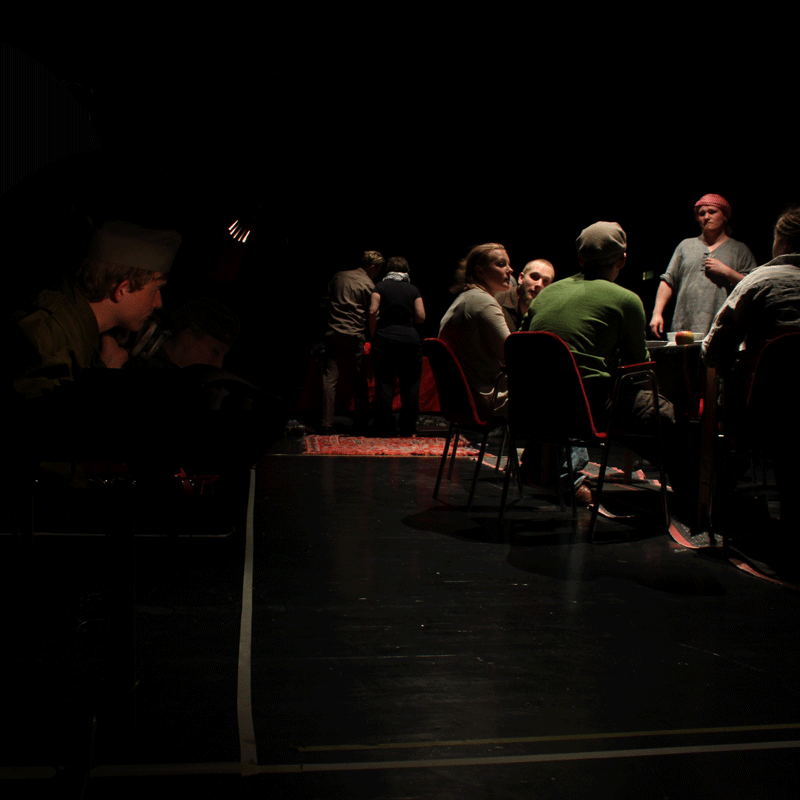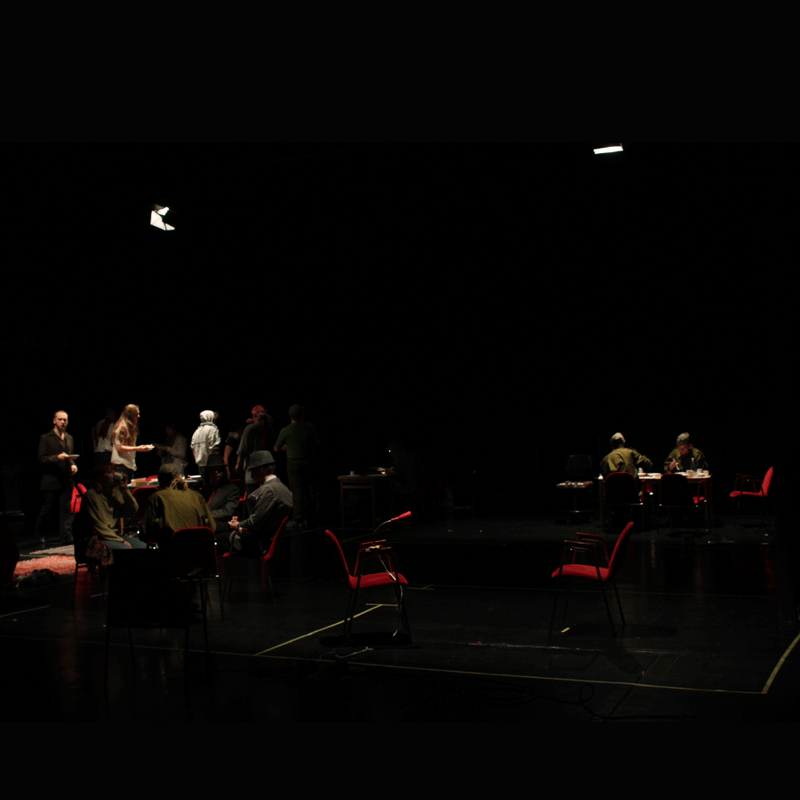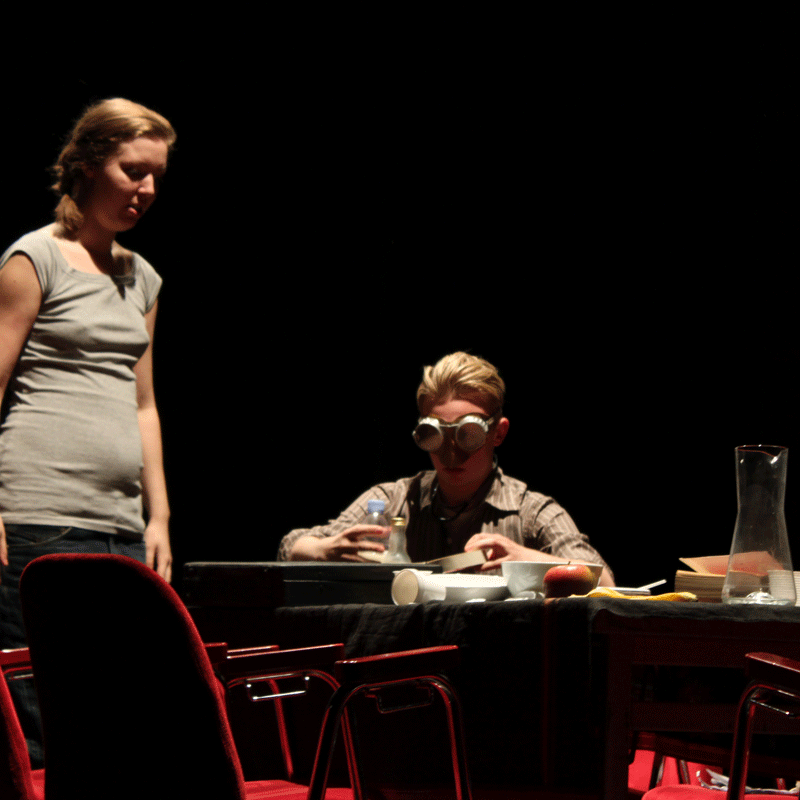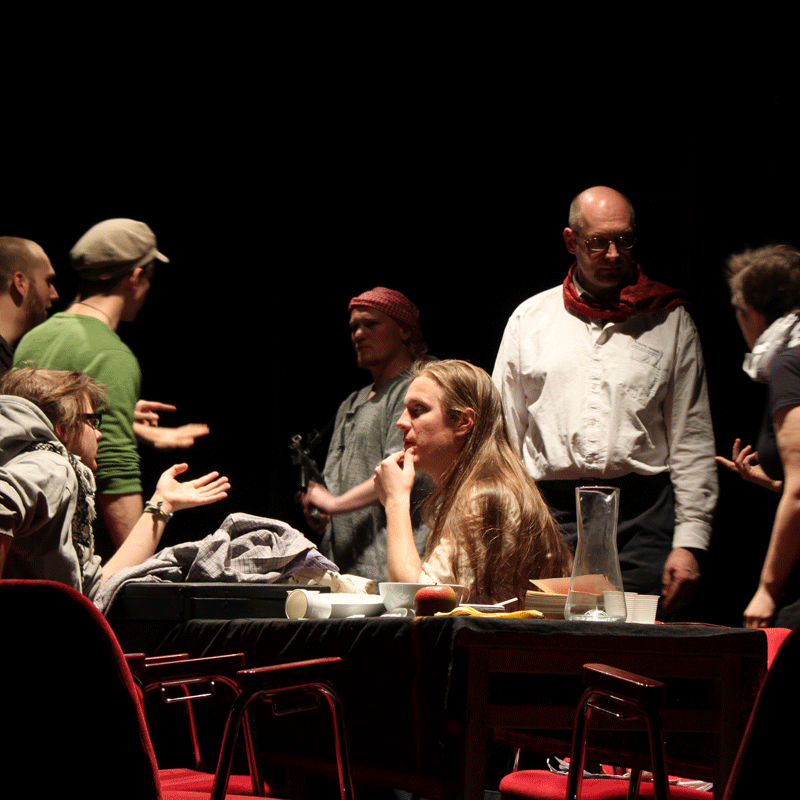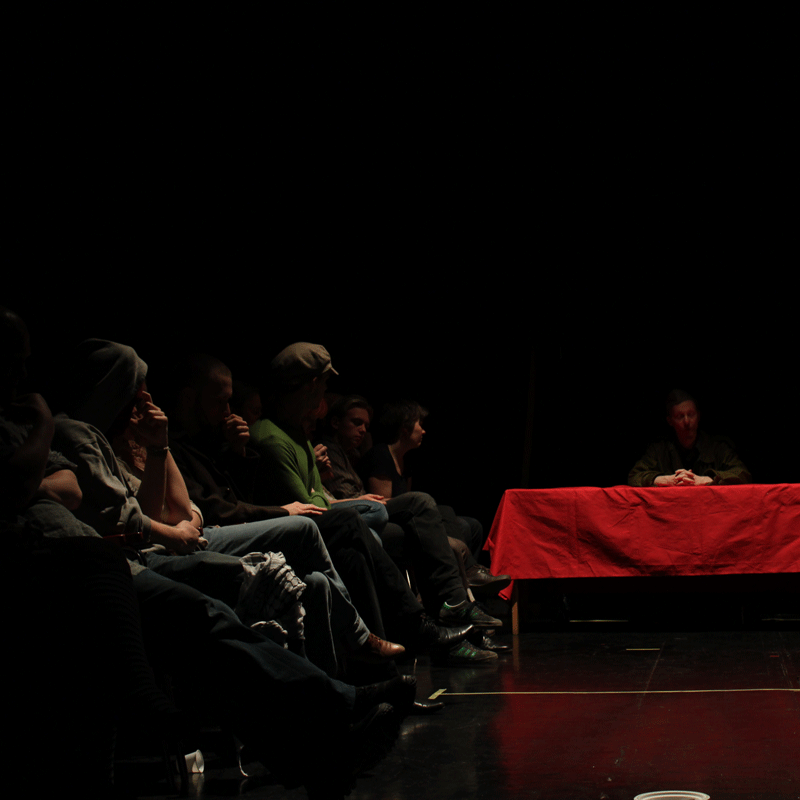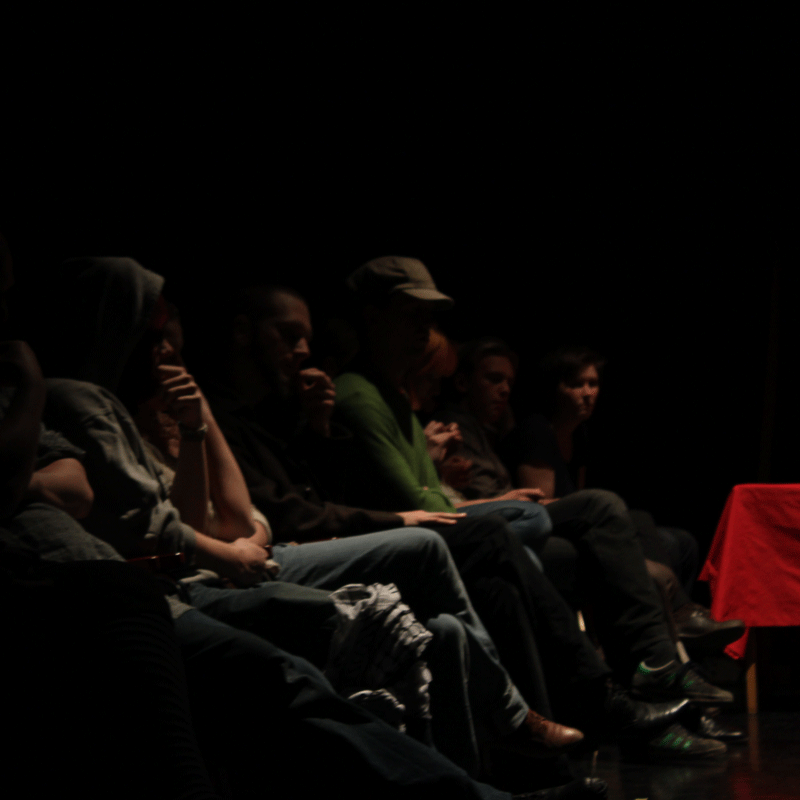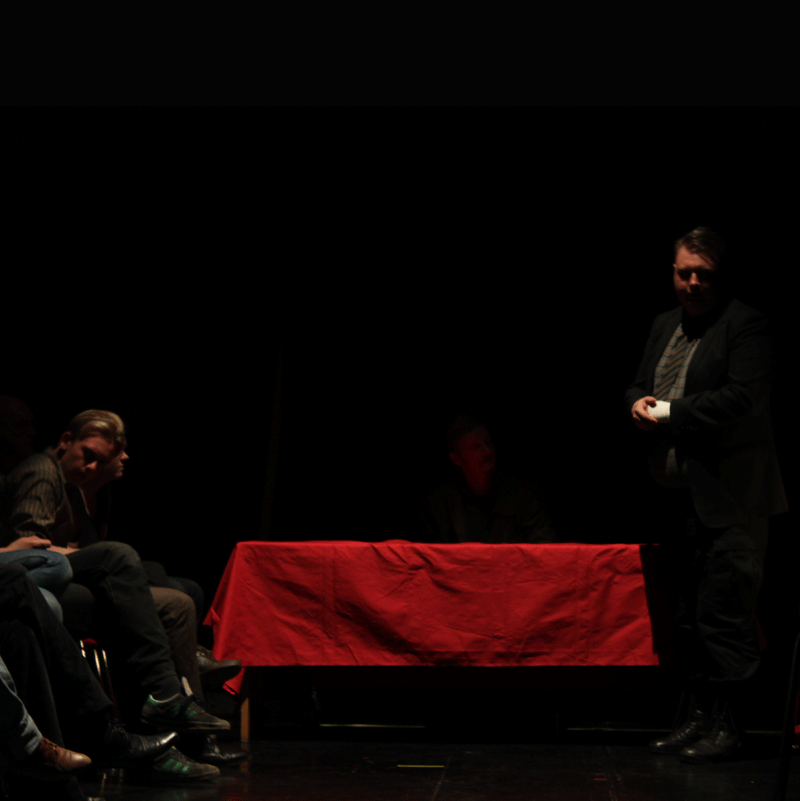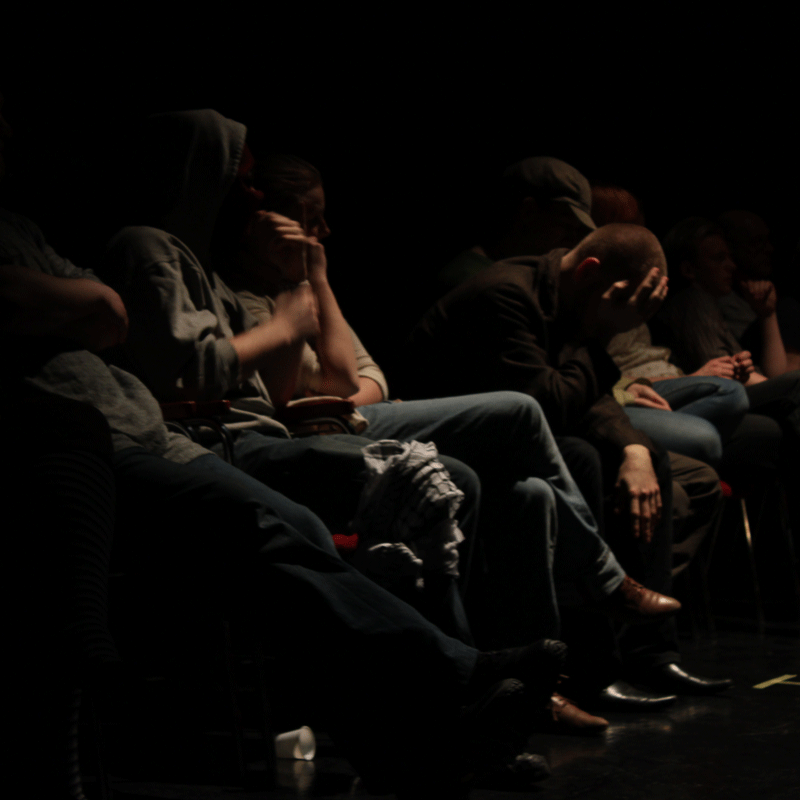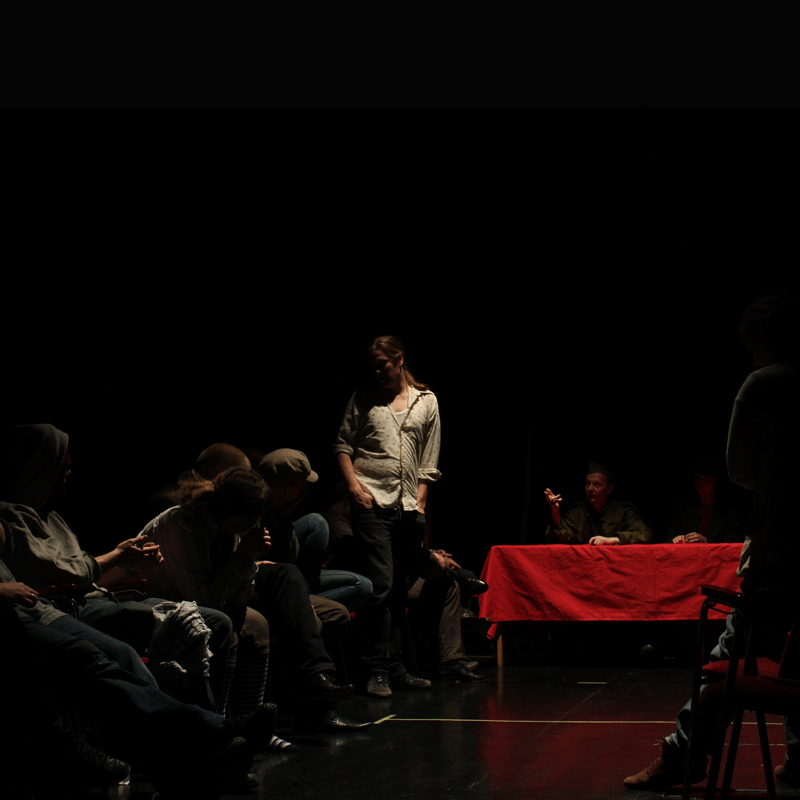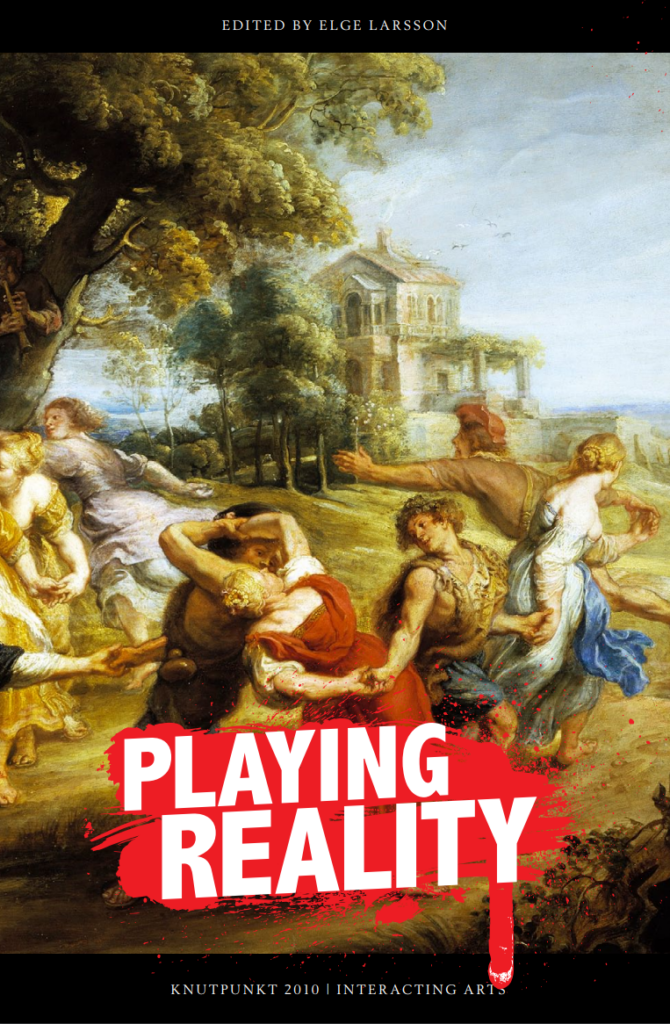This article was published in the anthology Playing Reality by Interacting Arts 2010.
DESIGNING LARPS IS A COMPLEX PROCESS and one must have courage to take on the responsibility of doing it. The players are demanding and bring creative power as well as infinite demands. I have assembled a few common mistakes that are made in larp design. If you avoid them you we’ll be pretty much on track. They are of course a generalization and there are probably exceptional situations where all of these design choices can be motivated. So rather than banning them from larp design I wish that you, as an organizer, think twice before using them. The mistakes all have a common feature: they disable role-playing. So the work-arounds would generally be focused on how to enable participant interaction by the means of their characters.
MISTAKE ONE: THE ACTION IS ELSEWHERE
There is a revolution going on – but you are not there. Placing the characters outside the actual drama is quite strange, but still common. It is as if the organizers wish to save the players characters from drama. But drama is not dangerous, its the nerve of role-playing. This doesn’t mean that only big actions are important, the small ones can be great experiences too. Forgiving, approaching, confessing, trusting can all make nice scenes, but we must also dare to let our characters suffer and hate, murder and make love. This means placing the characters center-stage. If you write a story that is imposssible to enact within the confinements of the physical space of live role-playing you should reconsider the means for telling the story. Maybe a freeform role-playing session would suit it better. Larp is not neutral – so we must find stories that surf on the waves of collaborative improvised character interaction rather than writing up epic or cinematic narratives that in the end is forced off stage. The problems with cinematic aesthetics in larp was noted ten years ago in the Dogme ‘99 (Fatland and Wingård 1999), but it’s still a holy grail for all too many organizers.
MISTAKE TWO: THE WORLD IS BIG – BUT THE STAGE IS SMALL
Many organizers has an urge to ”create a world”. Nothing wrong about that, but its very common that the world is described by 50+ pages, followed by one page about the actual setting of the scenario. This way the backdrop of the story becomes very heavy and the players are afraid to improvise in a way that conflicts with the pre-written world. Neither are they helped in relating to each other. If the larp is set in a small village in the forest, you are not very supported by knowing how big army or deep religious beliefs or flourishing trade the people of the neighbouring country has. What you actually need is to be informed of the context of the actual stage: the village. Who lives there? How are they related? What are they doing on a Friday night? What are their dreams about? And for the purpose of creating drama: What are their holy cows? Who is in debt to whom?
MISTAKE THREE: THE SURPRISE! – DECONTEXTUALIZING THE PLAYERS
Organizers trying to save their players from boredom through an unexpected rupture in the dramaturgy of the scenario is quite common. When organizers doesn’t believe in the basic strengths of their scenario they are tempted to save the players from boredom by twisting the whole scenario. This works perfect in most media, like litterature and film: think Trueman show, The Matrix, Fight Club etc. But in the context of live role-playing it generally fails to serve its purpose. Why? Because putting the character in front of a completely unexpected situation – Your world is not what it seems to be! – also decontextualizes the player. The message being: Whatever you have prepared yourself for doesn’t make sense anymore. This makes the player insecure and alienates her from the character, erase the genre frames etc. The player must thus rethink her character. What would my character do in this super-strange situation? How would she feel? This generally disable the interaction between the characters for quite some time.
A deceptive design has sometimes been promoted, for example by the finnish pseudonym Markku Jenti in Nothing is True; Everything is permissible – Using Deception as a Productive Tool, but the article fails to communicate when it’s a good idea to decept the players in that way. Most of the text is actually about when it’s problematic designwise or morally dubious to do it.
There is nothing wrong about strange turns within a larp story – but neither is it a problem to communicate those twists on beforehand.
MISTAKE FOUR: NEGOTIATIONS OF NONSENSE
Negotiations within the fiction is not a bad thing per se. But its all too common that the negotiations is about something that doesn’t exist on the actual setting, something off-stage. “I have an army of 500 men, only two days travel from here” (the larp ending in one day). “But I have an army of 800 men, haha!” This kind of non-sensible negotiations will never support good drama. How about the beggar saying: “I’m prepared to work in your shop, just for free food and lodging.” The trick would be to put the things at hand into play. What matters to the characters at this point in their life?
Political negotiations does require more abstract conceptualisation and it’s potentially interesting to play. But if you don’t think it through carefully it is likely that the players will reenact present day ideological dogmas. We have seen many times how pseudo-medieval feudal villages has turned to present-day democracies. This is of course a sound impulse on behalf of the players, but sometimes a little bit too predictable and dull. Another problem in the same direction is how a conflict between upper and lower classes in a larp story turns into an argument between social liberal and social democratic ideologies, echoing the last debate between parlamentary left and right. Sometimes the political negotiations even resemble the yearly member metings where we choose a new board for the club. Is that where we want to go within our fantasy worlds too? Another board meeting, chewing through trivialities.
I would suggest political scenarios on another level – stories about affinity, forming groups and collectives, breaking them apart, regrouping, being in conflict, making peace, going to war.
After all larp is not about D.I.Y. but D.I.T., do-it-together.
MISTAKE FIVE: WRITING FOR AN ELITE
It’s rather easy to write a political scenario where 15 important people meet up to negotiate and have a nice time. It’s a lot harder to make all their servants, associates and subordinates to feel and become center stage. Extras are sweet in movies, but dull in larps. This does not mean that everyone on larps should play high status people, but rather that equal focus should be turned to all players involved, also in terms of theme. If the game has a political theme, then everyone should be involved in the political process one way or another. If the game has a social theme then social relationships should be the base for character interaction. All too often the theme of the game doesn’t involve more than a bunch of the characters. So please relieve us from “important” meetings in wich only a few are invited to play. The dynamics between open and closed rooms can be useful, but should be used with care.
MISTAKE SIX: DIFFERENT STYLES OF ROLE-PLAYING
During the years of manifestos (1999–2003) the theorists of the Nordic larp scene set out to find “the possibilities inherent in larp, […] unique laws; the essence of larp” (Fatland and Wingård 1999). It was like a reenactment of the early 20TH century modernist rapture in art. The problem was that we came back with a dozen of “essences”. Is it the story, the character immersion, winning the game, meeting people or making art that is the “essence” of larp? I would say that the general conclusion that came out of years of heated and friendly debates was that any of these directions can be made into the essence of larp. But, there is a but, if you combine two or more of those player motivations you can get into trouble. Thus communicating the style of play on beforehand is a win-win situation for everyone involved. If you are into intrigues and gaming you will find it pretty dull to interact with an esoteric immersionist. If you just want to hang out and have a nice time with your friends within a fictional framework, then you don’t want some maniac swinging rubber in close proximity etc. So organizing as if there was an essence in your way of doing larp is recommendable. The interaction will run smother and everyone will be content in the end.
FINAL REMARKS
So, why are these mistakes done over and over again? I mean this text is definetly not a critique of a certain group of organizers or genre or style.
My hunch is that we are a little bit scared by the potentials of the larp. Many organizers intentionally or unconsciously wish to «save» their participants from the larp. This happens in many ways and the consequences are most of the time disturbing or even ruining the player experience. My point here is that there is nothing fundamentally new about the design issues that I’ve tried to pinpoint.
The underlying problem seems to be that we know that it’s bad but still we do it, over and over again. Thus the philosophical/psychological twist to these hands-on design tips is to question wether we actually want involving, mindtwisting and breathtaking events, or if we are content with the stumbling scenarios that we keep on repeating? It is as if we unconsciously wish to fail to realize our fantasies, but with the right proximity. Neither too good nor too crappy. Might be that we do not really want our fantasies to come true, because that would probably have far-reaching consequences for our daily life. Our praxis is directed to almost getting there.
Are we too coward to use our full set of methods and learn from previous mistakes? Are we afraid of what can happen if we design at full throttle? I dare all the organisers out there to be even more daring in your proposals.
Let’s see how good we really are.
Thanks to A-K Linder for input.
GABRIEL WIDING teaches game design and cultural theory. He is cogeditor of Interacting Arts Magazine since 2001, a publication that aims to promote participatory artistic prac- tices and discuss its political implications. In 2008 Interacting Arts released a book in Swedish named Deltagarkultur (“Participatory Arts”). He has organized a handfull of larps, but lately been more into reality game design, working with mask play in public environments. He is also exploring the possibilities of combining role-playing with improvised dance.
REFERENCES



